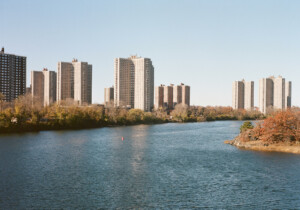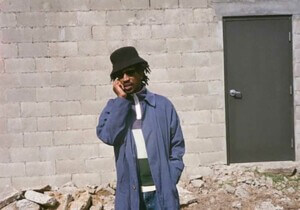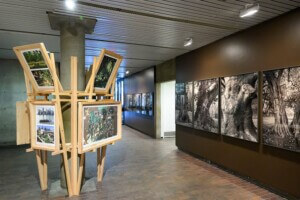The Chernobyl Exclusion Zone has been devoid of human habitation for over three decades. Radiation from the 1986 nuclear accident continues to saturate the borderlands of Ukraine and Belarus, rendering thousands of square miles effectively nature preserves. The landscape has been immortalized through countless photographic projects and television series, capturing a post-human ecosystem of abandoned tower blocks and industrial facilities. Artist Alice Miceli’s Projeto Chernobyl, on display at the Americas Society and curated by Gabriela Rangel and Diana Flatto, stands out from the standard documentation approach with a series of 30 radiographic negatives that map gamma-ray exposure across multiple sites within the exclusion zone.
Projeto Chernobyl began in 2006 and concluded in 2010. The location of the 12-by-16-inch radiographs was determined by extensive mapping conducting by Miceli and her team, as the sheets were placed in differing proximities to the failed Reactor No. 4 and exposed for two to eight months. Each, accordingly, was subject to a unique degree of radioactive exposure. The result is a series of haunting abstracts of manmade catastrophe and a post-human landscape.
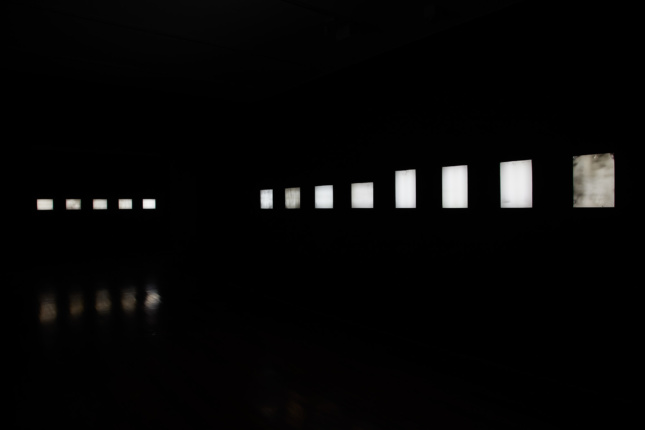
Considering the distinct approach to the project and the particularities of the location, it is no surprise that Miceli depended on a unique photographic technique. The initial choice was a pinhole-like device; inside of a lead-covered steel box, there would have been a smaller two-inch by two-inch lead square with a minuscule pinhole to expose the radiographic film. Although this process succeeded in a lab-controlled environment in Rio de Janeiro, it failed within the full-scale contamination of the Exclusion zone. The second approach, what was ultimately used for the project, involved placing the autoradiographic film directly onto radioactive matter, such as open fields, walls, windows, and trees.
“An autoradiograph, or autoradiogram, is an image imprinted on to a radiographic film that is produced by the decay emissions (the gamma rays) from radioactive matter,” said Miceli. “The radiographic film is placed in juxtaposition to, or in direct contact with, the contaminated matter, which in this case has become a radioactive source (like most if not all contaminated matter in the Zone), thus producing life-size images of the invisible contamination.”
The primary exhibition space has been designed as a void; Near pitch-black and accessed through a pair of blackout curtains. The 30 radiograph negatives are mounted on five walls and backlit by LED screens and are the only form of illumination within the room. Each of the negatives has a distinct mix of markings which provide broad contours of the subject matter, and their geography of radiation contamination. Natural phenomena such as rainfall and wear and tear resulted in further representational erratic, lending a watercolor-like effect or abrasions to individual negatives.
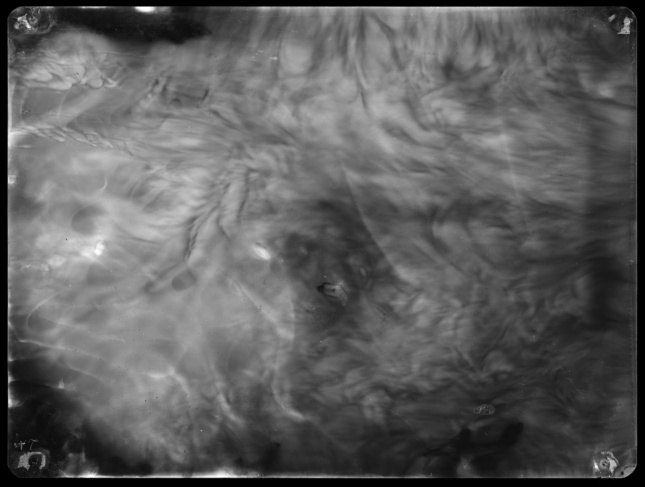
The exhibition also includes a brief introduction to Miceli’s larger body of work, including In Depth, a photographic series of active minefields in Bosnia, Angola, Cambodia, and Colombia. Black-and-white film photography covering her travels from Germany to the Exclusion Zone is an additional supplement to contextualize the exhibition.
Projeto Chernobyl
Americas Society
680 Park Avenue
New York, New York
Through January 25, 2020








